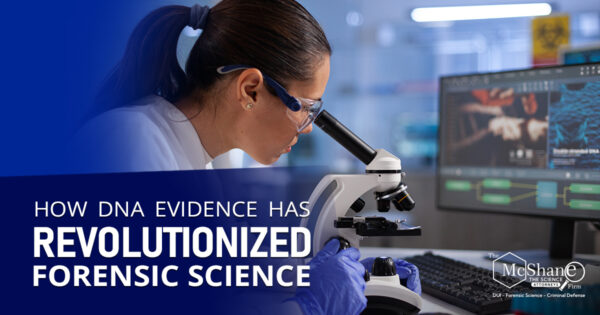DNA evidence has revolutionized forensic science and has become a powerful tool in criminal investigations and courtroom proceedings. In this blog post, we will explore how DNA is used in the forensic science context and in the courtroom. DNA, or deoxyribonucleic acid, is a complex molecule found in every cell of the human body. Each person’s DNA is unique, making it a valuable tool for identifying individuals and linking them to specific crimes.
In the forensic science context, DNA evidence is collected from a variety of sources, including blood, saliva, semen, and hair. Forensic scientists use specialized techniques to extract and analyze the DNA, comparing it to known samples from suspects or other individuals of interest. One of the most common techniques used in DNA analysis is polymerase chain reaction (PCR), which allows scientists to amplify tiny amounts of DNA into larger quantities that can be more easily analyzed. PCR can be used to create a DNA profile, which is a unique genetic fingerprint that can be used to identify individuals. DNA evidence can be used to link individuals to specific crimes or to exclude them as suspects. It can also be used to identify unidentified remains, such as in cases of missing persons or mass disasters.
In the courtroom, DNA evidence is presented to the jury as a means of proving guilt or innocence. The prosecution may use DNA evidence to link a suspect to a crime scene or to the victim, while the defense may use DNA evidence to argue for their client’s innocence or to challenge the validity of the evidence.
DNA evidence is generally considered to be highly reliable and persuasive in the courtroom, but it is not without its limitations.
One of the main limitations is the potential for human error, contamination, or misinterpretation, which can lead to false conclusions or wrongful convictions. One example of DNA evidence leading to a wrongful conviction is the case of Darryl Hunt, who was convicted of rape and murder in 1984 based largely on DNA evidence. Hunt was eventually exonerated in 2004, after further DNA testing proved that he was not the perpetrator of the crime.
Another example is the case of Lukis Anderson, who was accused of murder in 2012 based on DNA evidence found on the victim’s body. It was later discovered that Anderson’s DNA had been transferred to the victim through paramedics who had treated Anderson earlier in the evening. Anderson was eventually released from prison after spending more than five months behind bars.
In addition to human error and contamination, DNA evidence is also subject to interpretation and statistical analysis, which can lead to differences in opinion and potential for error. For example, in cases where a small DNA sample is available, statistical analysis may be used to determine the likelihood of a match. However, the accuracy of this analysis can be called into question if the sample size is too small or if the statistical models used are not appropriate for the circumstances of the case.
Furthermore, DNA evidence can only identify individuals who have had their DNA profiled and stored in a database. This means that in cases where the perpetrator has no prior criminal record, DNA evidence may not be useful in identifying them.
DNA evidence can be particularly difficult to work with degraded and aged samples, as well as samples that contain DNA from multiple contributors. These challenges can create difficulties for forensic scientists, and can make it harder to draw definitive conclusions from the evidence.
Degraded and aged samples are those that have been subject to environmental factors, such as exposure to heat, humidity, and sunlight. This exposure can cause the DNA to break down, making it more difficult to extract and analyze. In cases where the DNA is severely degraded, it may not be possible to obtain a complete or reliable DNA profile. One example of the difficulty of degraded and aged samples can be seen in the investigation of historical crimes. In cases where the evidence is several decades or even centuries old, it can be extremely challenging to obtain usable DNA samples. In some cases, forensic scientists have resorted to using techniques such as mass spectrometry or next-generation sequencing to obtain usable DNA from these samples.
Multiple contributor samples are those that contain DNA from more than one individual. These samples can be particularly challenging to work with, as it can be difficult to distinguish between the DNA profiles of different contributors. This is especially true in cases where the DNA of one contributor is much more prevalent than that of the other(s). One example of the difficulty of multiple contributor samples can be seen in cases of sexual assault. In many cases, the DNA found on the victim’s body is a mixture of their own DNA and that of the perpetrator. This can make it challenging to obtain a clear DNA profile of the perpetrator, and can make it difficult to distinguish their DNA from that of the victim. This difficulty is even more pronounced when there are multiple non-victim contributors such as the case of a woman who has had sex recently with others in addition to the person she alleges has raped her.
Despite these limitations, DNA evidence has become a critical tool in the criminal justice system, allowing investigators to identify suspects, exonerate the innocent, and provide closure for victims and their families. But this “magic” has also caused a lot of heartache where the innocent have been caught up in the system due to its power as a piece of evidence. As technology continues to advance, the use of DNA evidence is likely to become even more widespread.


